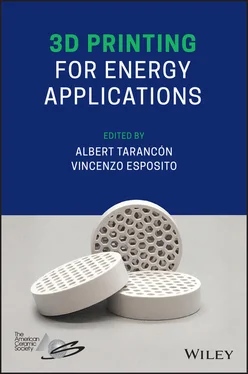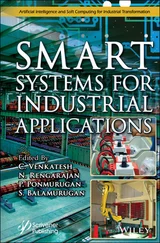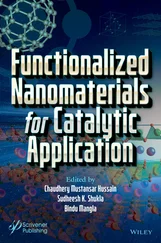With the expected increase of such successful experiences in printing relevant parts for the energy industry, it will progressively start adopting 3D printed devices and systems. The energy manufacturing sector is expected to be more reluctant to adopt the printing technology than end‐users to integrate printed objects (if their performance is kept similar or is improved). On the other hand, more inconveniences are foreseen for end‐users regarding required standards and certifications of their products. These standardization efforts should go together with quantitative Life Cycle Assessment studies on the reduction of waste material and energy consumption as well as the evaluation of the recyclability and ecological impacts of these alternative products. Moreover, a full deployment of the 3D printing technologies for a huge market as the energy requires an industry laying on a robust value chain. Currently, there is an absence of redundant big players in almost all the steps of this value chain and a lack of skilled workforce (from designers to operators), more noticeably for functional materials such as ceramics.
Another important point to cover to reach the energy market, is the development of big size and high speed 3D printing processes able to cover a high and increasing demand. This evolution from a prototyping to a manufacturing approach will be driven by increasing the complexity of the printed parts (extending capabilities to fabricate high value‐added parts such are devices) and ultimately pointing the upcoming mass customization of energy products. Mass customization refers the fabrication of custom‐made products at a competitive price. In this regard, developing “tabletop factories” such as 3D printers will generate a competitive manufacturing process in terms of product flexibility and short time‐to‐market for energy devices boosting the idea of an industry 4.0 based on mass customization by 3D printing.
Large scientific and technical production in the field of 3D printing has risen in the last years. The fame of 3D printing comes from the actual power of the technique combined with its coverage in a broad range of applications. Such a potential is also boosted by the current viability of affordable 3D printers for consumers and prosumers, where the market often escorts the actual possibilities with the promise of revolutionizing the way we consume and create. This combination of factors has indeed created great expectations. However, for the advanced uses, 3D printing firmly refers to a complex chain of additive manufacturing procedures and, besides some exceptions, it relies on boundary interdisciplinary research. Form the scientific and technical point of views, the variety of the topics and the possibilities appear endless and often it results difficult to identify the real possibility.
In view of such preliminary considerations, in this book, we try to shade light on the real possibilities of 3D printing in one of the most charming opportunities opened by additive manufacturing methods: the energy field. To construct a critical discussion around this fascinating topic, we define in Part I the link between most recent advances in the field of additive manufacturing with functional materials to be used in the energy systems. Under such a frame, selected contributions with the typical material science approach, we introduce the three classes of materials used in 3D printing: polymers, metals, and ceramics. We also highlight the need of use combinations of materials; multi‐materials manufacturing is the key in energy systems and the actual potential and limits of manufacturing multifunctional materials. Such an approach is reviewed in Part II, with key contributions about consolidated techniques, hybrid printing technologies, and new opportunities in the field. We especially focus on 3D printing challenges for production of complex objects, suiting a wide range of energy systems devices, not only for functional parts but also for accessory components. Finally, elements of interdisciplinary and consideration on consolidated trends in the energy research field are reported in Part III, with key‐examples of 3D printing of energy devices. In this last section, we have selected some important cases covering both consolidated energy technologies, such as turbines, batteries, capacitors, solar and nuclear as well as emerging technologies (piezoelectric energy harvesting, electrochemical fuel cells, and thermoelectric energy generation), and environmental solutions (chemical conversion and CO 2capture) that bring the promise of clean and sustainable solutions for the environment.
We edited the book to address readers with different backgrounds and aims, including graduated students in the materials science and engineering, chemists, mechanical engineers interested in manufacturing methods but also for a wider readership, seeking in 3D new opportunities of research and business.
1 1 Ruiz‐Morales, J. C., Tarancón, A., Canales‐Vázquez, J., Méndez‐Ramos, J., Hernández‐Afonso, L., Acosta‐Mora, P., . . . Fernández‐González, R. (2017). Three dimensional printing of components and functional devices for energy and environmental applications. Energy & Environmental Science, 10, 846–859.
2 2 Yang, Y., Chen, Z., Song, X., Zhu, B., Hsiai, T., Wu, P.‐I., . . . Shung, K. (2016). 3D printing of piezoelectric element for energy focusing and ultrasonic sensing. Nano Energy, 27, 78.
3 3 Eckel, Z. C., Zhou, C., Martin, J. H., Jacobsen, A. J., Carter, W. B., & Schaedler, T. A. (2015). Additive manufacturing of polymer‐derived ceramics. Science, 351, 58.
4 4 Wang, X., Jiang, M., Zhou, Z., Gou, J., & Hui, D. (2017). 3D printing of polymer matrix composites: A review and prospective. Composites Part B: Engineering, 110, 442–458.
5 5 Travitzky, N., Bonet, A., Dermeik, B., Fey, T., Filbert‐Demut, I., Schlier, L., . . . Greil, P. (2014). Additive manufacturing of ceramic‐based materials. Advanced Engineering Materials, 16, 729.
6 6 Nadgorny, M., & Ameli, A. (2018). Functional polymers and nanocomposites for 3D printing of smart structures and devices. ACS Applied Materials and Interfaces, 10, 17489.
7 7 Gibson, I., Rosen, D. W., & Stucker, B. (2010). Additive manufacturing technologies. New York: Springer Science + Business Media LLC.
8 8 Mueller, J., Courty, D., Spielhofer, M., Spolenak, R., & Shea, K. (2017). Mechanical properties of interfaces in inkjet 3D printed single‐ and multi‐material parts. Additive Manufacturing, 4, 193–199.
9 9 Lopes, L. R., Silva, A. F., & Carneiro, O. S. (2018). Multi‐material 3D printing: The relevance of materials affinity on the boundary interface performance. Additive Manufacturing, 23, 45.
10 10 Gaytan, S. M., Cadena, M. A., Karim, H., Delfin, D., Lin, Y., Espalin, D., . . . Wicker, R. B. (2015). Fabrication of barium titanate by binder jetting additive manufacturing technology. Ceramics International, 41, 6610.
11 11 Zhou, X., Parida, K., Halevi, O., Liu, Y., Xiong, J., Magdassi, S., & Lee, P. S. (2020). All 3D‐printed stretchable piezoelectric nanogenerator with non‐protruding kirigami structure. Nano Energy, 72, 104676.
12 12 Tubío, C. R., Guitián, F., & Gil, A. (2016). Fabrication of ZnO periodic structures by 3D printing. Journal of the European Ceramic Society, 36, 3409.
13 13 Yang, Y., Chen, Z., Song, X., Zhu, B., Hsiai, T., Wu, P.‐I., . . . Shung, K. K. (2016). Three dimensional printing of high dielectric capacitor using projection based stereolithography method. Nano Energy, 22, 414.
14 14 Yee, D. W., Lifson, M. L., Edwards, B. W., & Greer, J. R. (2019). Additive manufacturing of 3D‐architected multifunctional metal oxides. Advanced Materials, 31, 1.
15 15 Chavez, L. A., Wilburn, B. R., Ibave, P., Delfin, L. C., Vargas, S., Diaz, H., . . . Lin, Y. (2019). Optimization of 3D printing parameters for BaTiO3 piezoelectric ceramics through design of experiments'. Materials Research Express, 6, 8.
Читать дальше












